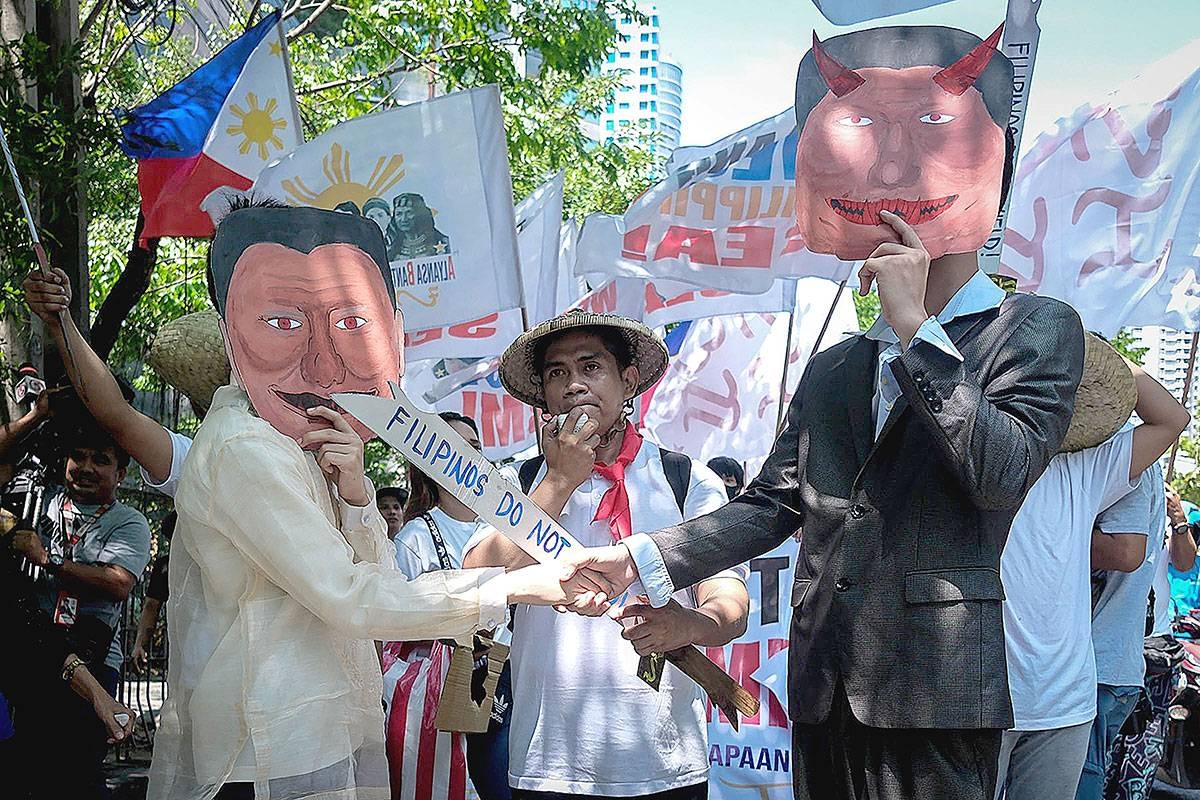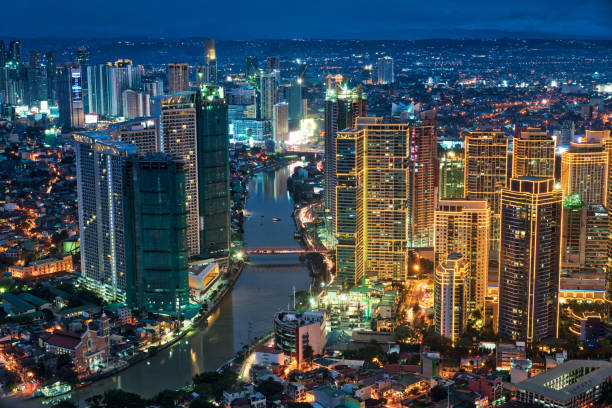According to the latest reports from Sealight, China’s maritime militia has been actively repositioning its ships in the West Philippine Sea, signaling its readiness for “swarming” maneuvers. This strategic movement has sparked concerns among neighboring countries and maritime experts, who view it as a potential escalation of tensions in the already volatile region.
The maritime transparency project, Sealight, has been closely monitoring and reporting on activities in the South China Sea, shedding light on China’s maritime militia’s actions. This militia, often referred to as the “Little Blue Men,” consists of civilian vessels that are believed to be operated by the Chinese government. While they may appear innocuous, these ships have been involved in various incidents, including harassment of foreign vessels and encroachment on disputed territories.
The concept of “swarming” maneuvers involves deploying a large number of vessels simultaneously, overwhelming the opponent’s defenses and creating confusion on the battlefield. This tactic has been employed by naval forces around the world, but China’s maritime militia’s utilization of it raises concerns due to the potential for miscalculation and unintended escalation.
The West Philippine Sea, which encompasses the disputed waters in the South China Sea, has been a hotbed of territorial disputes between China and its neighboring countries, including the Philippines, Vietnam, and Malaysia. China’s assertive claims and aggressive actions in the region have led to heightened tensions and increased militarization, with all parties involved bolstering their military capabilities and presence in the area.
The repositioning of China’s maritime militia ships indicates a potential shift in their operational strategy. By positioning their vessels strategically, they can swiftly mobilize and concentrate their forces in specific areas, posing a significant challenge for the opposing forces. This maneuverability allows them to respond rapidly to any perceived threats or assert their dominance in disputed waters.
The actions of China’s maritime militia not only have immediate implications for the security and stability of the region but also raise broader questions about China’s long-term intentions and its commitment to international norms and rules. The international community, particularly the countries directly affected by these developments, must closely monitor and respond to China’s actions to ensure the peaceful resolution of disputes and safeguard freedom of navigation in the South China Sea.
In conclusion, China’s maritime militia’s preparation for “swarming” maneuvers in the West Philippine Sea has heightened concerns among neighboring countries and maritime experts. The repositioning of their ships, as reported by Sealight, indicates a potential shift in their operational strategy and raises questions about China’s long-term intentions in the region. It is crucial for the international community to closely monitor and respond to these developments to maintain peace and stability in the South China Sea.
The Movement of Chinese Militia Ships
According to Ray Powell, the director of Sealight, at least 20 large militia ships have been observed moving south based on the Automatic Identification System (AIS). Two groups of eight vessels have headed towards the Spratly Islands, while another group of four has moved southeast towards the Bajo de Masinloc (Scarborough Shoal). This movement coincides with a recent hydrographic survey conducted by a Philippine research vessel in the area.
In a previous week, a swarm of Chinese vessels, including China Coast Guard (CCG) ships and Qiong Sansha Yu maritime ships, was monitored at Bajo de Masinloc. Gaute Friis of Sealight explains that swarming is a common Chinese tactic used to overwhelm and intimidate other countries’ assets, assert dominance, or provide a security screen for certain Chinese ships on special missions. Beijing has employed this tactic on multiple occasions in the past.
This recent movement of Chinese militia ships raises concerns about China’s intentions in the South China Sea. The Spratly Islands, in particular, have been a source of territorial disputes among several countries in the region. China’s assertive actions in the area, including the construction of artificial islands and military installations, have heightened tensions and led to increased militarization.
The movement of these militia ships towards the Spratly Islands suggests that China is further consolidating its presence in the disputed region. By deploying these vessels, China aims to project its power and influence, asserting its territorial claims and challenging the presence of other nations. This is not the first time China has used such tactics to assert its dominance in the South China Sea.
The Scarborough Shoal, also known as Bajo de Masinloc, is another contentious area in the South China Sea. It has been a subject of dispute between China and the Philippines for years. The recent movement of Chinese militia ships towards this area indicates China’s determination to maintain control over the shoal and prevent other countries from accessing its resources.
The swarming tactic employed by China is a calculated strategy aimed at overwhelming and intimidating its opponents. By deploying a large number of vessels, including coast guard ships and maritime militia, China creates a formidable presence that can deter other countries from challenging its claims. This tactic also serves as a security screen for Chinese ships involved in special missions, allowing them to operate without interference.
The international community has expressed concerns over China’s actions in the South China Sea. The United States and its allies have conducted freedom of navigation operations to challenge China’s excessive maritime claims and assert the principles of international law. However, China has remained steadfast in its stance, dismissing these operations as provocations and asserting its sovereignty over the disputed areas.
As tensions continue to rise in the South China Sea, the movement of Chinese militia ships serves as a reminder of the complex geopolitical dynamics at play in the region. The actions of China and other claimant states have far-reaching implications for regional security and stability. It is crucial for all parties involved to engage in peaceful dialogue and adhere to international norms in order to prevent further escalation and find a peaceful resolution to the disputes.
Philippine Response and Concerns
The Armed Forces of the Philippines (AFP) have noted an increase in CCG and maritime militia vessels in Bajo de Masinloc. After completing its survey off Bajo de Masinloc, the Philippine research ship BRP-H Ventura is heading towards Pag-asa Island, coinciding with the arrival of 16 Qiong Sansha Yu ships. The CCG 5303 has been shadowing the Ventura and its Philippine Coast Guard (PCG) escort ship, the BRP Gabriela Silang, as they make their way to Pag-asa Island.
It is believed that the Ventura will conduct research in the Pag-asa Cays, which were previously disrupted by Chinese forces. The CCG 5303 has also been observed blocking Philippine vessels within the Philippine Exclusive Economic Zone (EEZ), causing delays and tensions in the region. This aggressive behavior by China has raised concerns about its intentions and adherence to international maritime laws.
The Philippine government has expressed its concern over the escalating presence of Chinese vessels in the area. The increased number of CCG and maritime militia vessels in Bajo de Masinloc and the aggressive actions of the CCG 5303 have been seen as a direct violation of the Philippines’ sovereignty and territorial rights. The presence of these vessels not only disrupts the ongoing research activities of the BRP-H Ventura but also poses a threat to the security and stability of the region.
The Philippine Coast Guard (PCG) has been actively monitoring the situation and has called for the immediate withdrawal of the Chinese vessels from the area. The PCG has also increased its patrols in the Philippine EEZ to ensure the safety and protection of Philippine vessels and fishermen operating in the area. The AFP has been coordinating closely with the PCG to address this escalating situation and has vowed to protect the country’s territorial integrity.
The international community has also expressed its concern over China’s actions in the South China Sea. The United States, Australia, Japan, and other countries have called on China to respect international law and to resolve disputes through peaceful means. The presence of Chinese vessels in the Philippine EEZ not only undermines regional stability but also threatens freedom of navigation and overflight in the South China Sea.
In response to China’s aggressive behavior, the Philippines has sought support from its allies and partners. The country has engaged in diplomatic negotiations with other claimant states and has called for a united front in addressing China’s maritime assertiveness. The Philippines has also sought the assistance of international organizations, such as the United Nations and the Association of Southeast Asian Nations (ASEAN), to help mediate the dispute and ensure a peaceful resolution.
As tensions continue to rise in the South China Sea, the Philippines remains committed to upholding its sovereignty and territorial rights. The government will continue to assert its claims through peaceful means and engage in dialogue with other parties involved. The presence of Chinese vessels in the Philippine EEZ is a clear violation of international law, and the Philippines will not hesitate to defend its interests and protect its maritime resources. China’s recent actions in the West Philippine Sea have raised concerns among neighboring countries and the international community. Many experts believe that these actions may be seen as a message from China, possibly in response to recent events such as the trilateral summit between the Philippines, the United States, and Japan. China’s aggressive stance and assertion of its claim over the disputed territories, based on its controversial “9-dash line” assertion, have been widely disputed and criticized.
In response to China’s actions, the Philippines has formed a three-way partnership with the United States and Japan. This partnership aims to strengthen security ties in the region and address common concerns. However, China has expressed its disapproval, arguing that such alliances only escalate tensions in the area.
The formation of this partnership and China’s aggressive actions have sparked reactions from various actors in the region. In particular, several youth organizations belonging to the newly established Alyansa Bantay Kapayapaan at Demokrasya (ABKD) held a protest rally in front of the Chinese embassy in Makati City. The group strongly condemns the aggressive actions of the Chinese Coast Guard against Philippine ships and Filipino fishermen in the West Philippine Sea and EEZ. They assert the rights of the Philippines under the United Nations Convention on the Law of the Seas (UNCLOS) and call for a peaceful resolution to the territorial dispute.
Rodolfo “RJ” Villena Jr., ABKD convenor and spokesman, emphasized the importance of registering their concerns and demonstrating their opposition to the harassment and intimidation faced by Philippine ships and fishermen. The group supports the policies of President Ferdinand Marcos Jr., affirming the country’s sovereignty in the West Philippine Sea.
The ongoing tensions and disputes in the region, as highlighted by the movements of Chinese militia ships, the response of the Philippines, and the reactions from regional actors, underscore the need for peaceful resolutions and adherence to international maritime laws. It is crucial for all parties involved to seek diplomatic solutions and maintain stability and security in the Indo-Pacific region.







